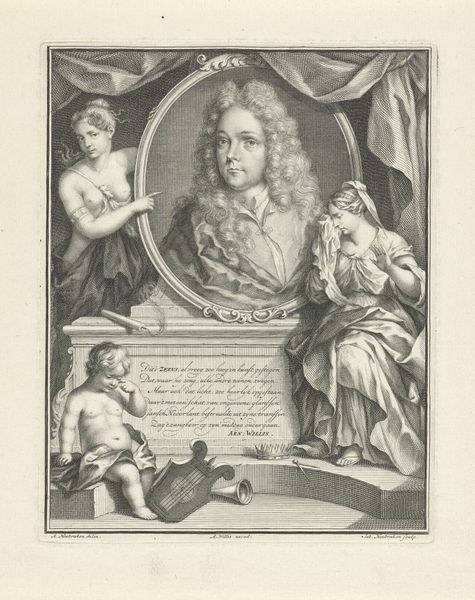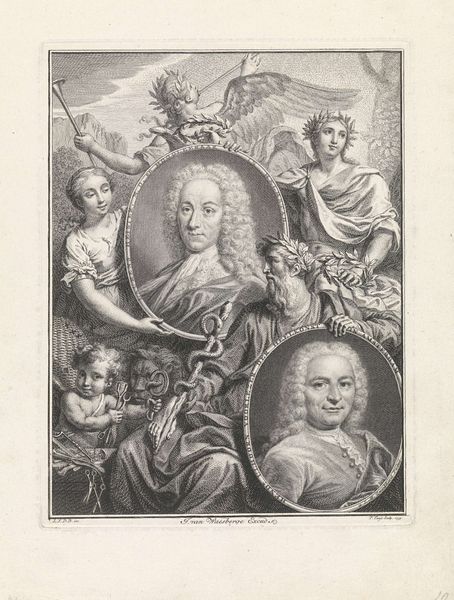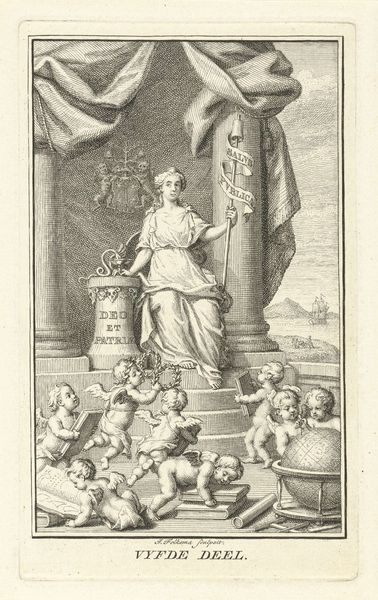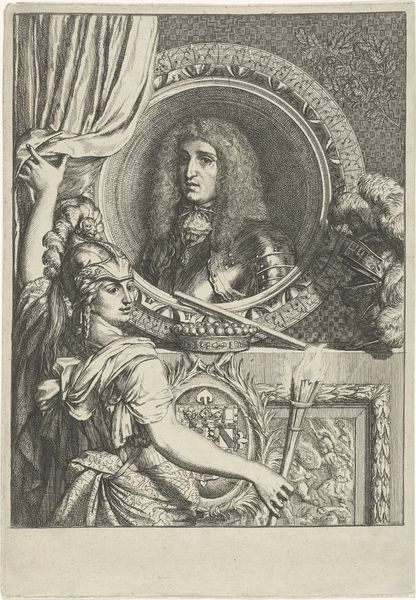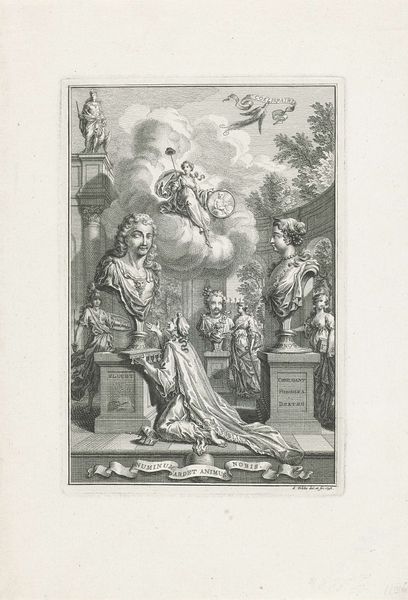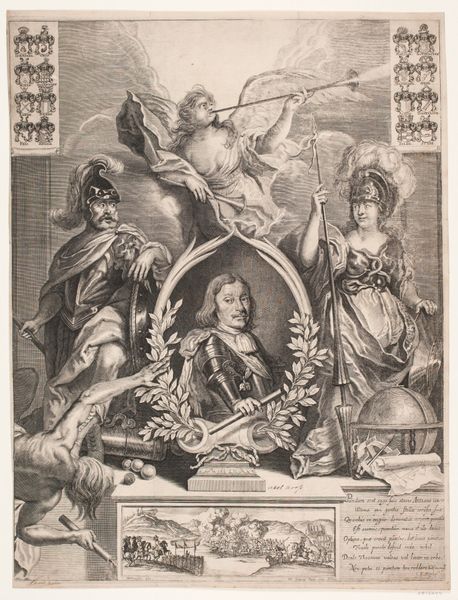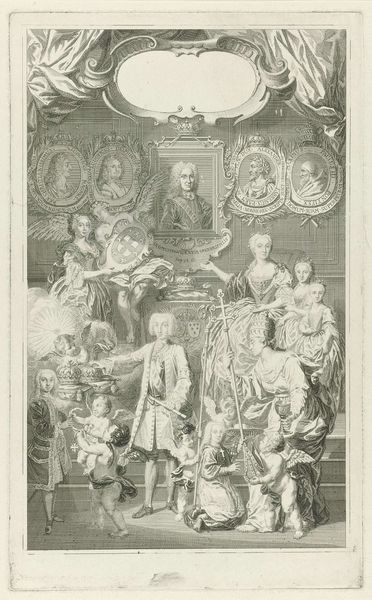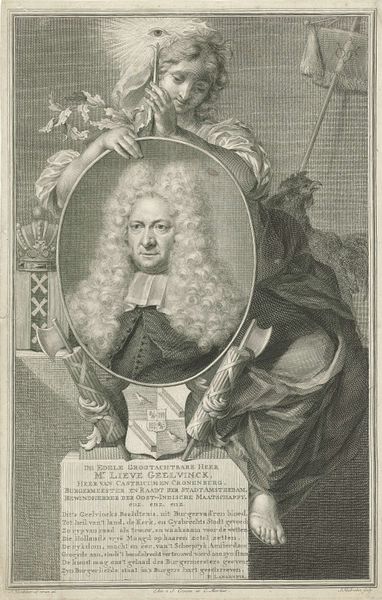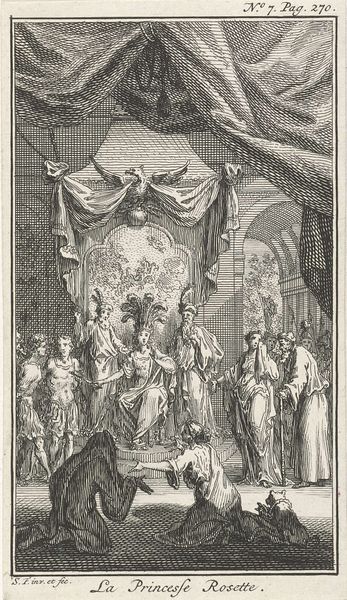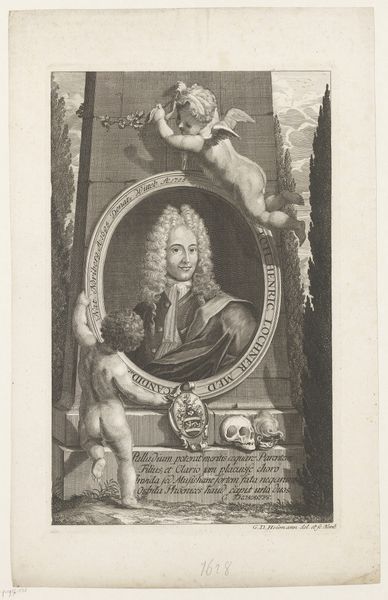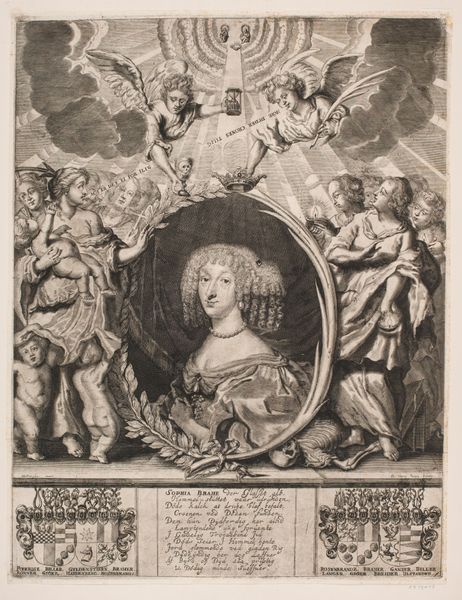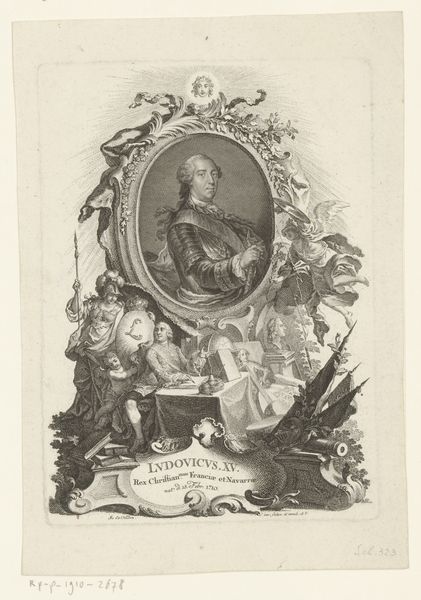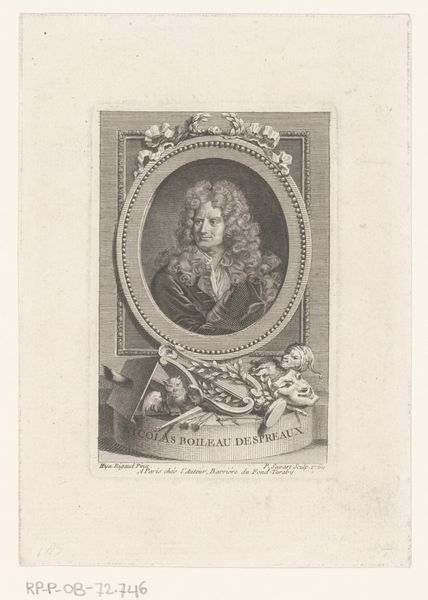
engraving
#
portrait
#
baroque
#
old engraving style
#
limited contrast and shading
#
history-painting
#
engraving
Dimensions: height 358 mm, width 232 mm
Copyright: Rijks Museum: Open Domain
Editor: This is Jacob Houbraken’s “Portret van Ferdinand van Collen,” an engraving from 1727. It's quite ornate! What jumps out to me is the idealized depiction and allegorical figures, like the cherubs. How do you interpret this work, particularly within its historical context? Curator: Well, it’s crucial to see this portrait as more than just an individual likeness. In the Baroque era, portraiture was deeply intertwined with power, status, and social identity. Van Collen, a prominent figure in Amsterdam, is being presented in a very specific way. Notice the cherubs and allegorical figure of “Justice”, for example: how do these details serve to legitimize his authority and place within the social hierarchy? Editor: So, it's not just about accurately depicting his features? Curator: Exactly. The visual language reinforces societal values and justifies existing power structures. Think about the very act of commissioning such a grand portrait. What does it say about Van Collen's understanding of his own importance and his desire to be remembered in a certain light? Editor: That makes me see it differently. It's like a carefully constructed performance of power and authority. The details I initially saw as merely decorative actually contribute to that construction. Curator: Precisely. And how might the absence of women in positions of power during that period influence your reading? Who has access to constructing these legacies? Editor: Understanding that historical context is critical! It moves it from just an old picture to a statement about social power, carefully crafted to endure. Curator: Yes, thinking about those lasting implications certainly gives one much to consider, particularly with a contemporary lens.
Comments
No comments
Be the first to comment and join the conversation on the ultimate creative platform.
